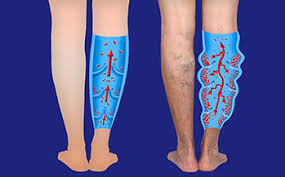3 main causes of varicose veins

Risk factors
The two main risk factors for varicose veins are:
Family history. If other family members have varicose veins, there’s a greater chance you will too.
Obesity. Being overweight puts added pressure on veins.
Other things that might increase the risk of varicose veins include:
Age. Aging causes wear and tear on the valves in the veins that help control blood flow. Over time, that wear causes the valves to allow some blood to flow back into the veins, where it collects.
Sex. Women are more likely to get the condition. Hormones tend to relax vein walls. So changes in hormones before a menstrual period or during pregnancy or menopause might be a factor. Hormone treatments, such as birth control pills, might increase the risk of varicose veins.
Pregnancy. During pregnancy, the blood volume in the body increases. This change supports the growing baby but also can make the veins in the legs bigger.
Standing or sitting for long periods of time. Movement helps blood flow.
Complications
Complications of varicose veins are rare. They can include:
Ulcers. Painful ulcers can form on the skin near varicose veins, mostly near the ankles. A discolored spot on the skin often begins before an ulcer forms. See your healthcare professional right away if you think you have a leg ulcer.
Blood clots. Sometimes, veins deep within the legs get larger. They might cause leg pain and swelling. Seek medical help for ongoing leg pain or swelling. This can mean a blood clot.
Bleeding. Rarely, veins close to the skin burst. This mostly causes only minor bleeding. But it needs medical help.
Leg swelling. Longtime varicose veins can cause the legs to swell.